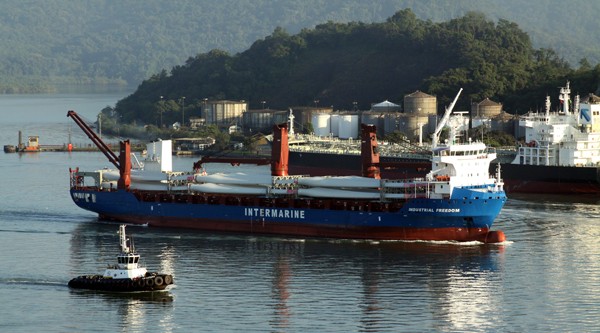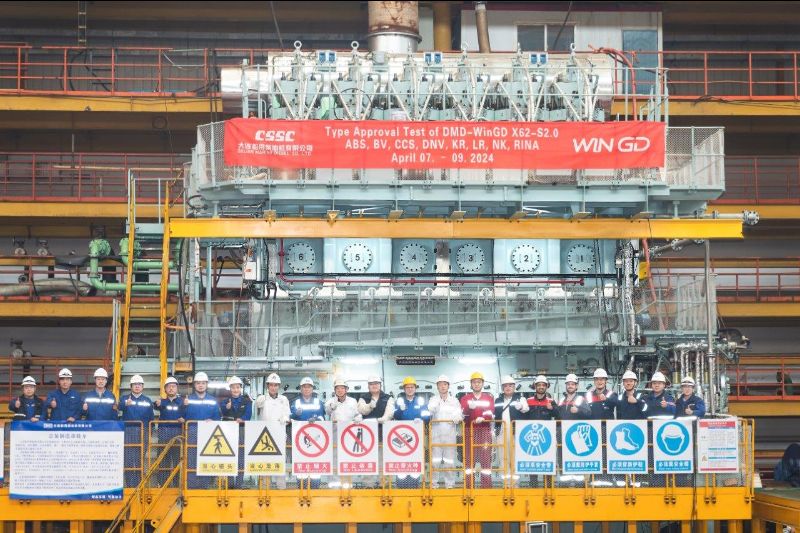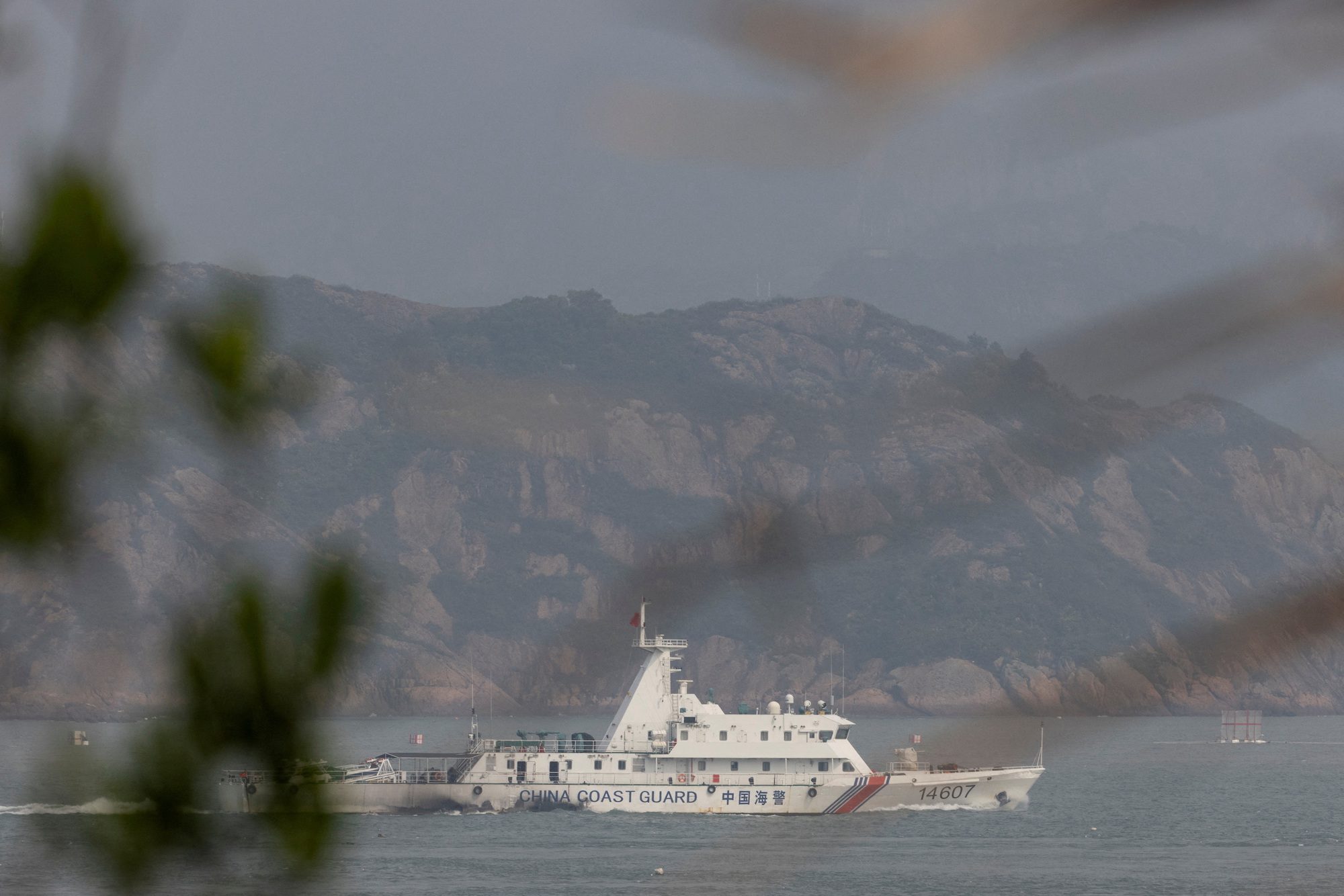
Intermarine Interview Part 3: Panama Canal Expansion, Container Trade, and the KG System
Michael Dumas, Chief Financial Officer of Intermarine, and Flagship Management‘s Jack Mylott begin Part 3 of this 4-part interview.
JM: The expansion of the Panama Canal will certainly have a significant impact to the global shipping industry once completed. Do you see that as having much of an impact on your existing business. None of your vessels are Panamax, but what impact, if any, do you see that having?
 MD: It really doesn’t have much impact on our ships going through there, or even our competitors, because those ships are small enough where they currently have easy access to the canal. I believe the most significant impact lies within the bigger container ships as the 12 to 13,000 TEU will now be able to pass through. The super 18k TEU ships will not be able to pass through, but with these larger container ships going through, they’ll move to the East Coast and the Gulf Region which will have an impact on the ports in those places. There is going to be a need for transshipment and this will put a greater demand on port facilities in the US and the Gulf area. Greater demand on ports will put a greater demand on labor supply, but will also provide opportunities for us. We are one of the largest container carriers for niche containers in South America, so there may be opportunities for transshipment in those areas as well.
MD: It really doesn’t have much impact on our ships going through there, or even our competitors, because those ships are small enough where they currently have easy access to the canal. I believe the most significant impact lies within the bigger container ships as the 12 to 13,000 TEU will now be able to pass through. The super 18k TEU ships will not be able to pass through, but with these larger container ships going through, they’ll move to the East Coast and the Gulf Region which will have an impact on the ports in those places. There is going to be a need for transshipment and this will put a greater demand on port facilities in the US and the Gulf area. Greater demand on ports will put a greater demand on labor supply, but will also provide opportunities for us. We are one of the largest container carriers for niche containers in South America, so there may be opportunities for transshipment in those areas as well.
It’s not going to have a direct impact on the project shipment per se, but it will have an impact on other ancillary businesses within the container front, and within the port facilities. There are already several ports that are trying to determine how they are going to react to this canal expansion, both in the US and other countries such as Trinidad.
It’s going to be interesting to see how it develops over the next few years.
JM: As you look into the future, do you see the niche container trade becoming more of a factor for you based on some of these new opportunities that may present themselves?
CEO, Andre Grikitis: I think we hope that’s the case. When Mike talks about our container traffic, we’re talking about the ports that the large containerships will not be going in to. Hopefully we can get to do more of that work whether on a direct, or transshipment basis. I think that the opening of the canal will certainly impact the region, and places like Columbia will expand their transshipment activites. That brings other economic development, and we are certainly out looking for the possibilities where we have capacity where we can assign to carrying containers to some of these “outports”. Again, it’s part of our view of the need for us to have a combination of cargos to continue to be successful. I expect this will have an impact.

JM: Early on, you touched on the KG situation, and I know that had a direct impact on Beluga Shipping along with some of the irregularities that apparently went on over there. Those assets appeared to have been redeployed with other shipowners/operators who are out there, but what impact do you see to the access to capital. Do you see a change, or have you had any involvement with the KG financing schemes, or do you a change coming in the future where there will be a significant shift that will help to correct the balance of supply and demand?
AG: Of course, my opinion is that the KG system completely screwed up the supply and demand story. The fact that some of those assets have been redeployed doesn’t mean they have been redeployed in a way in which they are properly deployed. What we see is a kind of crisis because pricing for certain projects and cargoes, the delta between high and low prices from time to time is so wide, that we can see that many of the ships that are out there today are in inexperienced hands who are not aware of the trade. As a result of the KG system, understand that the KG’s themselves had what they called owners who were the technical managers and they were sometimes the commercial managers. The commercial managers quite often put these vessels on to time charter, and those deals, the bank deals, were obtained on the basis of a time charter, with the banks not looking at who the time charter necessarily was, meaning that the underlying credit risk was not vetted or understood.
I think that sounds a little familiar right?
So, that is the core of the problem right now. You have more assets looking at homes for all kinds of bad reasons, and the market is going to have to get re-priced somehow. Moratoriums for the KG’s were put in place by the banks because they could mark to market, they didn’t want to take the write-downs, so they kicked the can down the road, and now they’ve come to the end of the road. This is just one of the pieces of what looks like a pile of rubble on the European banking front.
I think what the KG really was, is what I would call a market destroyer.
So the KG system is, if you look at the statistics, is only fractionally there. New lending is down, and I think now there will be a lot more “retrenching” in Europe. The European banks are in such a difficult situation with their capital structure that they need to improve their capital base, especially in Germany, which has historically been the source of debt financing for the container operators, and the multi-purpose sector. They are in a very difficult situation because they need to retrench, scale back the amount of their ship portfolio, and mark them to markets. Which means they will have to take losses and will basically do-in some of the owners.
So then where do they go?
They then have to spill these assets, but they’ve been reluctant to do that up to this point, but some of these KG owners have had moratoriums on debt of up to 3 years. And now they’ve reached the point where they can’t do that any longer. They are getting a lot more strict with the borrowers, and are now starting to seize assets.
It makes for a very difficult situation over in Europe, one that kind of bleeds over to the US. Although there aren’t many shipping companies in the US, there are the publicly-listed companies, but there isn’t a lot of other entities. It has impacted the asset values which has then dried up the source of debt financing. Some of the US banks have started to get interested again, the likes of Chase and Bank of America, and some of the others. The leasing companies are starting to show interest. The Loan to Values are not going to be as good as they have historically been. If you get a loan at a value of 60% I think you’ll be doing pretty well. So it’s definitely turned the sources of capital upside down, and for those entities that are highly leveraged, it’s going to be an extremely difficult road for the next 18 to 24 months.
There’s just not a lot of good news on the horizon because the ships keep coming, there is going to continue to be freight rate pressures impacting the charter rates and the EBITDA by these companies. It makes it extremely difficult to try and raise new capital.
The banks are gun-shy.
For the most part, they don’t really want to lend any more, and the ones that do want to lend will only do so with the good companies in the first place. There are a few companies in the US that will be able to source funding from US banks, but some people are thinking to turn to the Chinese banks. The Chinese banks are very slow to move, they are used to only lending to Chinese companies, and they are starting to look at other European and US companies, but it’s an extremely slow process. These companies are starting to find out that Chinese lending terms and cost of funds is very expensive. That will be one alternative, but it will be expensive and slow to develop.
For newbuildings there will be opportunities, because the Chinese shipyards will benefit from that financing source, but refinancing or FCFs, that will be more difficult.
Continue Reading… Intermarine Interview Part 4: China’s Influence on the Multi-Purpose Heavy Lift Sector and Piracy

Subscribe for Daily Maritime Insights
Sign up for gCaptain’s newsletter and never miss an update
— trusted by our 109,105 members

Get The Industry’s Go-To News
Subscribe to gCaptain Daily and stay informed with the latest global maritime and offshore news

 Join The Club
Join The Club








